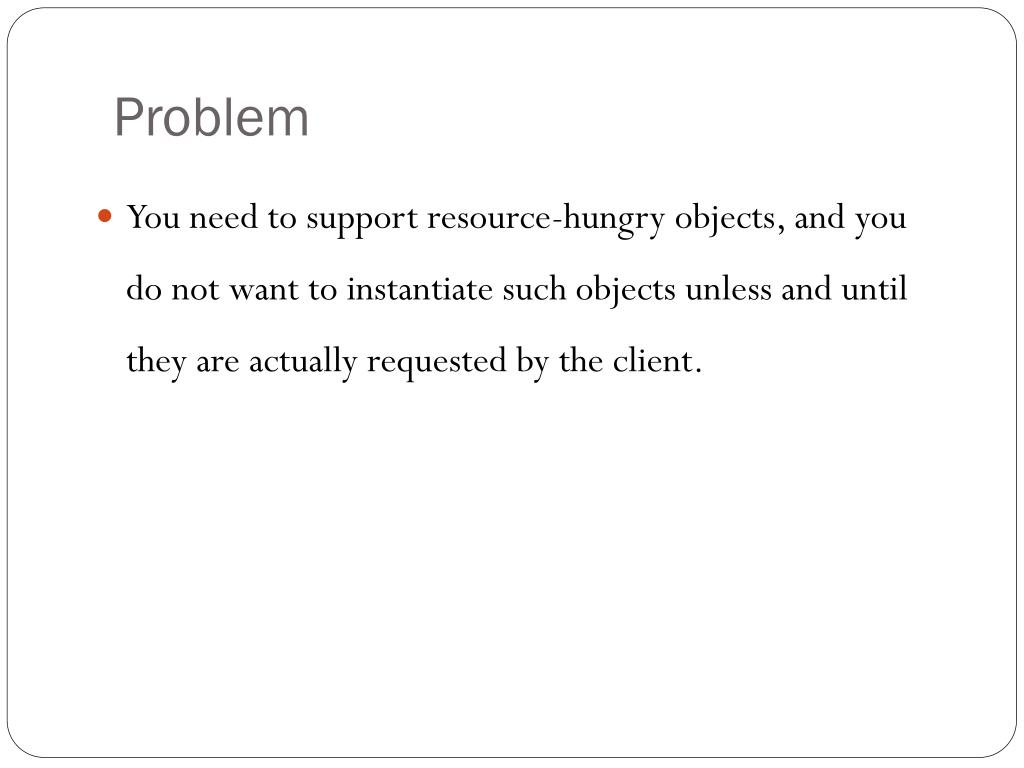

- #Indirection design pattern how to#
- #Indirection design pattern full#
- #Indirection design pattern software#
As shown in the general design overview for the proxy design pattern, the client will interact with your system by using the interface. The warehouse class will report its inventory to the proxy that asks for it. The warehouse class is your real subject class and will be responsible for actually processing and fulfilling parts of customer orders. It has a list of warehouses that it can delegate parts of customer orders to depending on whether or not a warehouse is capable of fulfilling a part of the order.

The order fulfillment class acts as the proxy for all your warehouses.
#Indirection design pattern how to#
This interface declares how to interact with your order fulfillment system.

The proxy class and the real subject class will implement the interface differently. The IOrder interface defines how you would fulfill the orders. So, how would you implement this system? You can use the proxy design pattern to have a proxy protect your real subject, the warehouses, from receiving orders if the warehouses don't have enough stock to fulfill an order.
#Indirection design pattern full#
A system that routes the order's full fulfillment to an appropriate warehouse will prevent your warehouses from receiving orders they cannot fill. You need some way to determine which warehouse to send the orders to. Suppose you run an online retail store with global distribution and warehousing, how would you know which warehouse to route orders to to fulfill customer orders? You may run into an issue where you route orders to a warehouse that doesn't have stock for an item in a customer order. Let's take a look at a practical application of the proxy pattern. Since the proxy and real subject classes are both sub-types of subject, a client class can interact with the proxy, which will have the same expected interface as the real subject. You can ensure that by having both these classes implement a common subject interface, which also allows for polymorphism. But, what calls need to be supported in the proxy class? Since the proxy class is meant to stand in for the real subject class, it must offer the same methods. The proxy class will only redirect more substantive requests to the real subject class. However, not all calls get delegated because the proxy class is supposed to act as a lighter version of the real subject class and can do some of its later responsibilities. The proxy class wraps and may delegate or redirect calls upon it, to the real object class. Let's take a look at the general classes and structure of the proxy design pattern. Think of this like working on a Google document where your web browser has all the objects it needs locally, which also exists on a Google server somewhere else. And three, to act as a remote proxy, where the proxy class is local and the real subject class exists remotely. So the different users, like students and instructors, can only access the appropriate functions permitted by their role. A protection proxy can be used in a learning management system that checks the credentials of a user. Two, to act as a protection proxy in order to control access to the real subject class. If you were to load all of these images at once, it could put a strain on your system's resources. This is commonly used on images, and web pages, or graphics editors, because a single high definition image can be extremely large. Why do we want to use a proxy class? The three most common scenarios for them are: One, to act as a virtual proxy where the proxy class is used in place of a real subject class, that is resource intensive to instantiate. Since the proxy class acts as a wrapper, client classes will interact with it instead of the real subject class. The real subject class is a part of your system that, for example, may contain sensitive information or would be resource intensive to instantiate. In this design pattern, the proxy class wraps the real subject class, that is, hides a reference to an instance of the real subject class. This is the goal of the proxy design pattern, which allows a proxy class to represent a real subject class.
#Indirection design pattern software#
We encounter similar issues in software systems where it is better to use a proxy object in place of the original. A proxy object is still able to accomplish the same tasks, but may delegate requests to the original object to achieve them. The proxy acts as a simplified or lightweight version of the original object. In each of these situations, an object is represented by a proxy object. And a credit card is an acceptable form of payment in place of cash. Crash test dummies are used instead of real human beings for vehicle collision testing. Individual representatives may be sent to speak on behalf of the company at a conference. There are times in life when it's easier, safer or more convenient to use a placeholder to represent something or someone else.


 0 kommentar(er)
0 kommentar(er)
